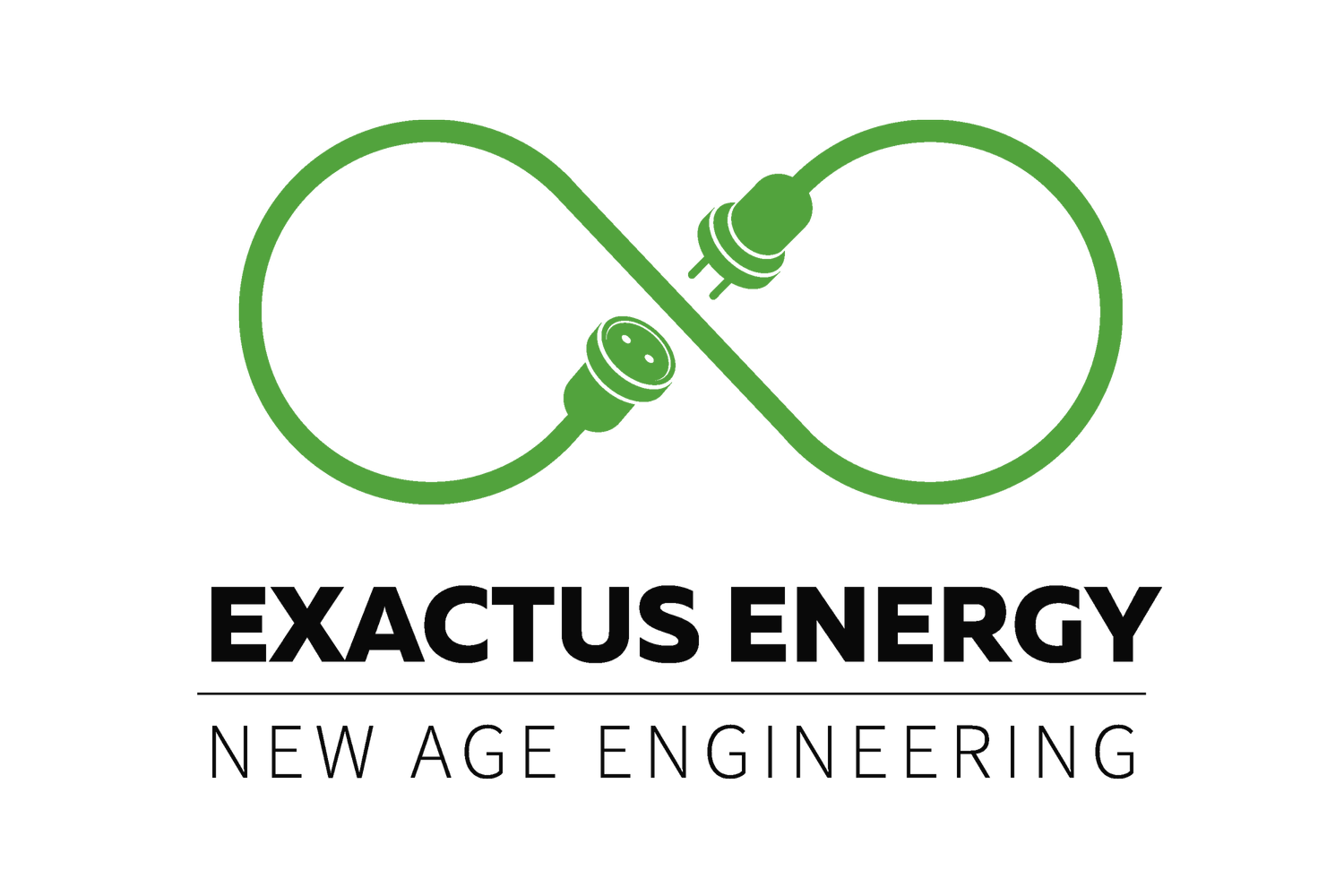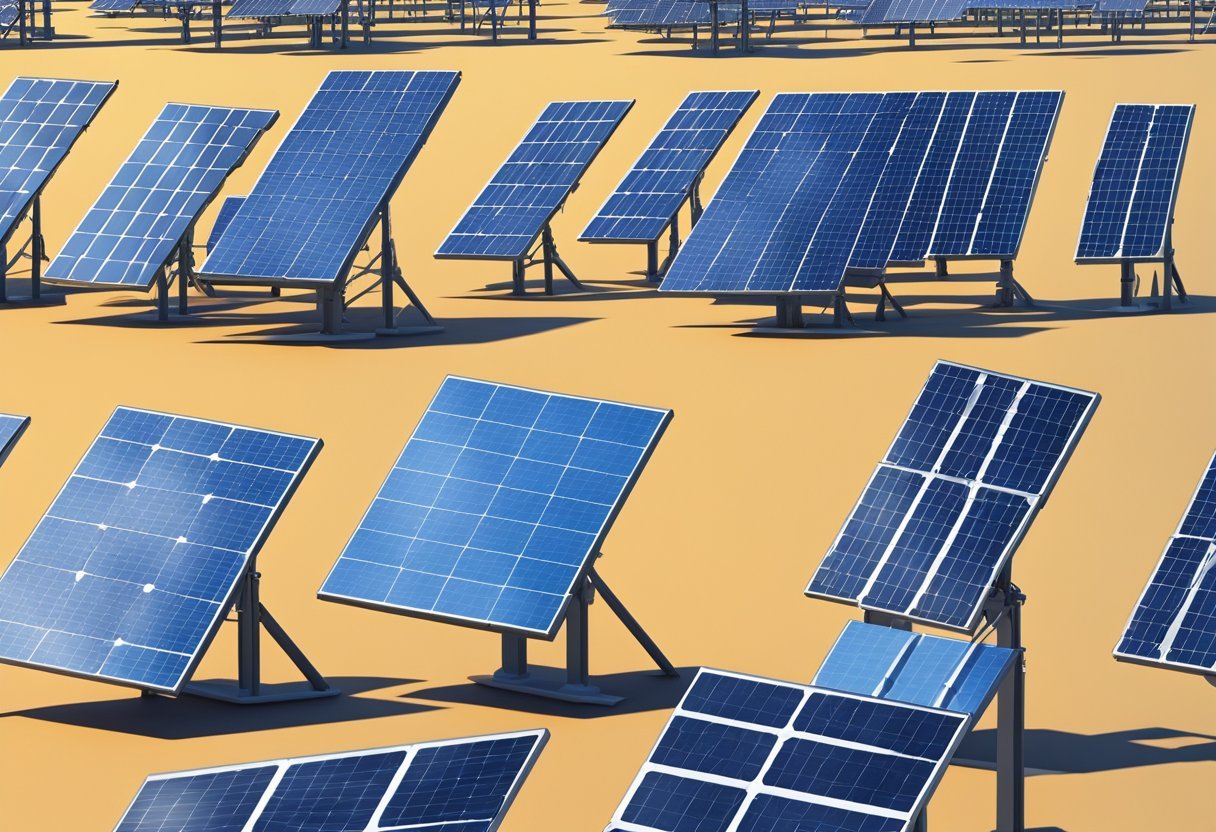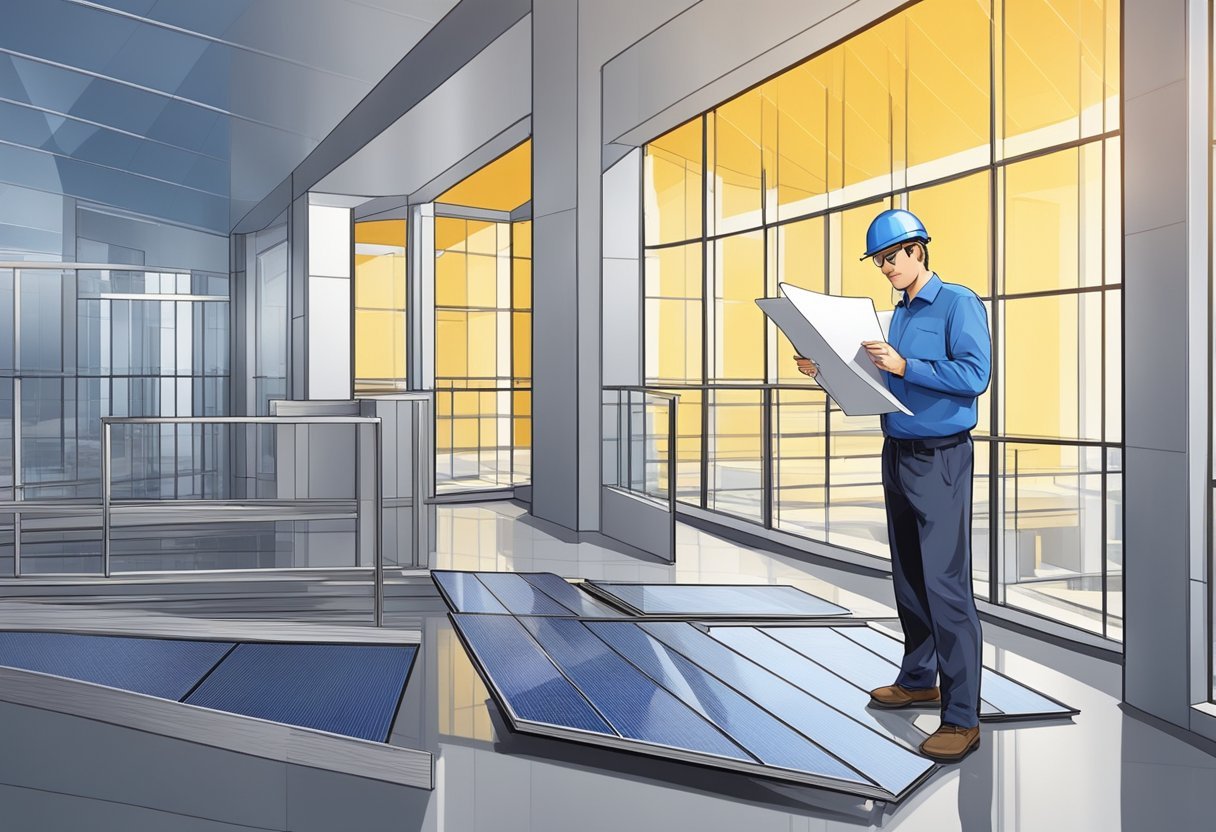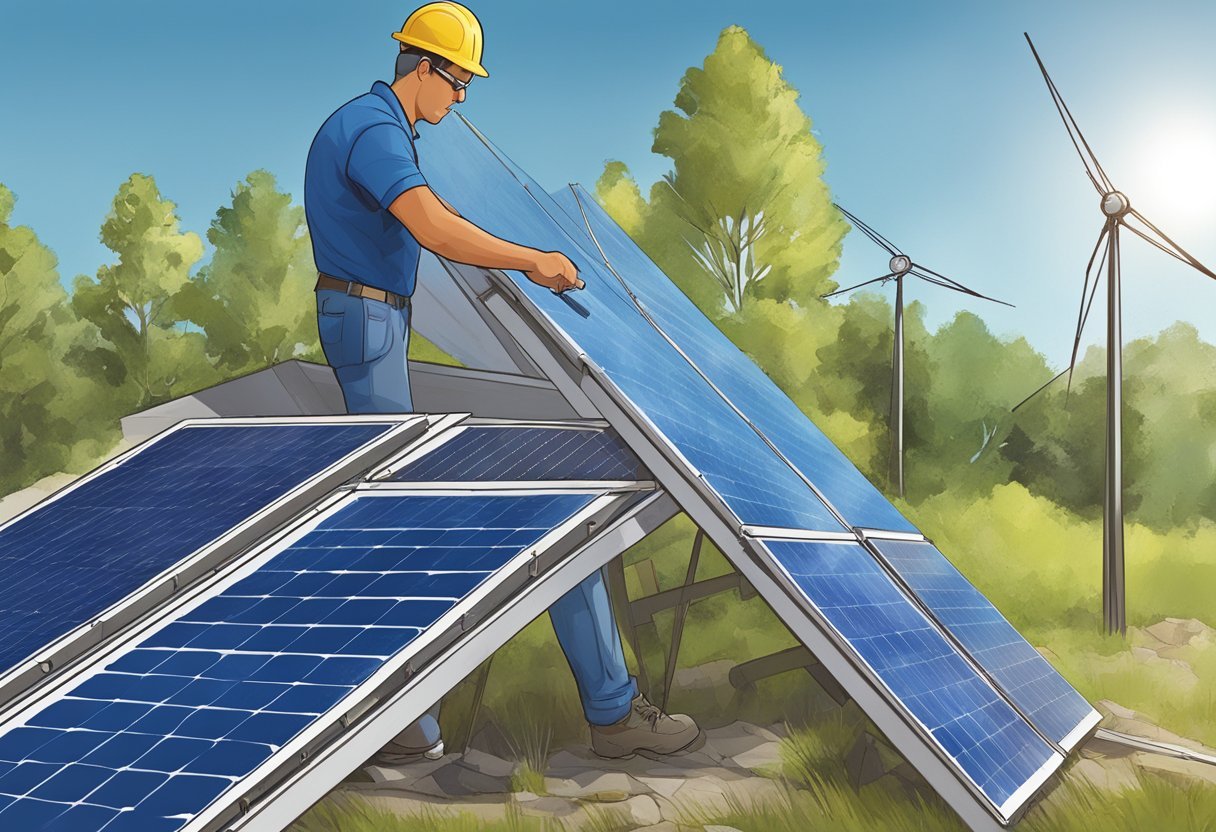The solar structural engineer profession is developing rapidly as demand for clean and sustainable energy skyrockets. Solar structural engineer reports play an essential part in the development of solar projects, they evaluate the project's design, materials, and construction for solar development. They provide essential insights to the feasibility and longevity of solar projects across locations and climates.
(Click here for additional information on our solar structural engineering services.)
One of the key considerations of a solar structural engineer report is the evaluation of the solar facilities. It involves analysis of the solar panels, supporting structures, and connections to the electrical grid. The solar structural report ensures the project adheres to local building code and safety standards, while evaluating other environmental aspects such as wind loads, snow loads, and seismic activity.
As the solar field growth is rapid, the solar structural engineer reports are invaluable. The structural report helps avoid potential hazards and risks, and enable advancement and optimization in this rapidly emerging field. The reports leverage solar project infrastructure knowledge and expertise, which create value while advancing solar energy and its related systems nationally and globally. By the reports providing comprehensive research and dissemination of solar project infrastructure knowledge and expertise, they add significant value to solar systems uptake and implementation worldwide.
Responsibilities and Roles
Contact us for a full range of solar permit services
Solar Structural Engineers
Solar structural engineers are an essential part of the design and implementation of solar energy systems. Their job is to evaluate the structural integrity of buildings, and that solar installations can be safely and successfully mounted on various types of structures, from houses and residential buildings to commercial buildings. Structural engineers analyze the materials of the building, construction techniques, and overall structural safety to determine if solar installations are achievable.
Structural engineers coordinate with other professional designers, such as architects, to produce calculations of loads and design systems to support the solar installation on the building. Their involvement is imperative for the safe, and operational capacity of the solar system. Structural engineers keep abreast of the developments in the industry and follow regulations and policies, including confirm ownership of or establishing building codes impact on the support for solar panels.
Contractors and Owners
Solar structural engineering plays a role towing the technical aspects of the solar installation, and responsibility lies with the contractor and owner. Owners manage the overall experience of working with the design engineer to develop and select the right solution for solar for their situation based on the information obtained about their performance and budget. They consider the energy being used in the facility, and if the solar supply will meet that facility energy load.
Owners consider the appropriate state and local building codes for the building and permit issue needed for the installation, as well as whether to allocate funds to regularly inspect and maintain the solar system and support hierarchy.
The contractor has the responsibility of implementation of the solar system system, and follows the documents from the structural engineer so their field implementation of the design is respecting the structural engineers designs. This could mean coordination with other construction trades, such as with an electrician and roofer, to ensure installation would go problem-free. It is also important to understand and meet contractor liability requirements, which depend on where the project is located.
To summarize, solar structural engineers, contractors, and owners all have critical roles for solar energy system construction, each should be communicating both efficiently and effectively to ensure project protection while providing efficiency and durability for the owner's normal use of the system and in accordance with professional standards and recommendations.
Structural Review and Design
Weight Assessment
When reviewing a solar structural engineer report, the loaded weight is assessed as dead load and live load on the structure by a photovoltaic (PV) system. The dead load is the weight of the solar panel mounts and rackings. The live load is the supplemental weight to the structure like snow, ice, and maintenance activities. These two weights define the allowable weight or load on the structure without compromising structural integrity.
Load Calculations
Loading calculations are conducted by solar structural engineers to establish the overall strength and stability of a PV system. The loading calculations are made up of the dead load from the solar panel array, live load from the environmental conditions including wind loads and snow loads, and additional loading provided by fasteners. The loading assessments conducted provide confidence that the structure can adequately support the PVsystem without affecting the structural integrity of the system.
Wind Loads and Snow Loads
Wind loads and snow loads are critical considerations in PV system design as they are considered live loads. In order to evaluate the wind loads and snow loads of a proposed PV system, solar structural engineers will simulate and utilize mathematical models that account for local climate as well as historical meteorological events. The engineers will use pressure coefficients to develop wind loading based upon wind speed, building height and building exposure.
Ballasting and Racking Systems
A central aspect to solar structural engineering is the selection of a ballast and racking system. Ballast systems are non-penetrating keeping the integrity of the roof intact; racking systems are penetrating and fastened directly to the structure to enhance load capacity. When the structural engineering team performs structural analysis and design of a PV system, they will evaluate the two systems based upon roof design, load capacity and overall stability adjustments, must meet building codes and structural requirements.
In summary, structural analysis and design of the solar structural engineer report includes any weight, load calculations, as well as the natural factors, e.g. wind loads and snow loads to assure the PV system can be installed safely and effectively.
Building Code Compliance
Summary of Code Requirements
Unpleasant overall experience, one of the issues with solar installations is code compliance. Code compliance allows for a means to ensure safety, stability and overall performance of solar systems for installations to the building. Code compliance shall take it a step further than the solar structural engineer is responsible to function and analyze systems to comply with the code compliance.
Compliance with International Codes
There are two primary codes, the International Building Code (IBC) and the International Residential Code (IRC) that are utilized for solar installations. These guides help ensure solar systems are designed and installed safely and effectively in the structural, mechanical, electrical, and plumbing systems of the building. Publications, such as the American Society of Civil Engineers (ASCE), are used in collaboration with these codes by solar structural engineers to develop comprehensive designs.
The codes in the 2016 edition - now including ASCE 7-16 - included updated structural provisions and requirements that can be applied directly to solar systems. Solar professionals should always pay attention to this type of updates to ensure compliance and safety are met by their systems.
Wind and Seismic Design Standards
Aspects of environmental exposure are an important consideration during the design of solar installations. A solar structural engineer should follow the wind design and seismic design standards developed by the ASCE 7 and indicated in the IBC and IRC. Following these standards provides protection against wind loads and seismic loads to solar systems, which minimizes the potential for damage and expedites the safety of the tenants and structures.
Some of the important design considerations for wind and seismic standards include:
Wind speed and exposure
Structural materials and connections
Geometry and slope of the roof
Seismic site classifications and hazard levels
Foundation design and soil conditions
And lastly, once the engineers follow established structural building codes and/or international codes and standards, solar structural engineers can provide compliant, safe, and effective solar systems whether they are for residential or commercial use.
Project Planning and Execution
Surveys and Capacity Assessment
Before the start of a solar structural engineering project, field assessments and existing structure capacity evaluation must be conducted. Field assessments, and existing capacity understanding, are the basis of the discussion of the ability to install solar panels onto the roof system. The discussions revolve around parameters such as existing roof area, existing roof load capacity, and any reinforcement that has to take place for the installation of the PV Panels on the roof.
Rooftop Solar Installation Specifics
Once the assessments are completed, a plan must be designed for the installation of the PV Panels onto the roof structure. The primary areas of concern will be roof slope, roof type, panels mounting system, and wiring. Plans that are designed with possible scenarios addressed will allow for the installation of the comprehensive planning stages. The table below presents an example of the main items of concern in the plan design:
| Component | Description |
|---|---|
| Panel Orientation | Optimal angle for maximum solar energy capture |
| Mounting System | The style and materials used to install and secure the panels onto the roof |
| Wiring Layout | Proper routing of electrical cables to minimize potential hazards |
Strengthening and Reinforcement
If the existing roof condition was not design to accommodate extra weight and mechanical loads of solar, such reinforcement would have to occur. This may include structural support of beams, columns, and/or braced support. Reinforcement that conducted potentially allows the building roof to support solar PV panels, freight, weigh, over time and associated equipment.
Documentation and Communications plan
Planning and communication with great documentation is the keys to successful solar structural implementation. Documentation should include surveys, capacity evaluations, plans to strengthen, and specifications for installation. Communication to all parties throughout the process should be considered to educations, challenges, and strategies. Sending informational updates through the proposed timeline or addressing delays, assessments, strategies among extensive partners (as applicable) helps ensure indication of some direction talked over and intention of project. Well communication with the team, customers, and group will also manage risks of project implementation.
Risk Management
Design Errors – Identify and Correct
In the area of solar structural engineering, this work is essential to be able to have a process to identify and correct design errors. Design errors might include incorrect calculations for component and cladding loads, identifying the wrong materials, or poor detailing. Establishing a formal review process at key points within the structural report design, assembly experienced professionals, and using more technical modeling and analysis software can significantly improve the design, thereby decreasing chances of error.
Construction Defects and Liability
Construction defects can present structural challenges, property losses, and exposures to possible liability. Therefore, it is essential to manage construction risks and prevent defects during construction. Some construction defect risk management techniques include:
Contractor selection with construction experience related to solar installations
Adequate training and monitoring for construction crews
Routine inspections and progress evaluations
Identifying and correcting defects at the earliest opportunity.
There are many more ways to prevent construction defects, but if each project within the team implemented these, construction defects and reduced liabilities would be minimized.
Dispute Claims and Resolution
Claims that arise from design errors and construction defects can cause delays, additional costs, and even legal action. To further minimize the likelihood of disputes, research recommends you have established protocols to manage claims:
Documentation: Be sure to have open and full documentation on all activities – contracts, change orders, notes from meetings, inspection reports, etc.
Communication: All parties involved should have clear communications to address issues with efficiency.
Conflict resolution: Implementing proactive conflict resolution processes, such as mediation, or dispute resolution boards to early on conflict resolution and amicable settlements.
By employing these types of measures, the stakeholder parties will be able to manage claims, if necessary, and reduce the odds of a legally protracted dispute which could threaten the overall success of the solar project.
Quality Assurance
Testing and Validation
In solar structural engineering, it is of mainly, the utmost importance to deliver the most reliable and economical systems. Part of the process includes following good quality assurance processes. Testing and validating components and structures is a part of that. Forensic engineering is an important factor in the identification of the reasons for the structural failures, and these engineers are able to utilize what they learn, to make better designs and materials. Looking back on these types of processes eventually helps lead to a more reliable and economical systems.
Laboratory tests are a necessary component of the quality assurance process which examines materials and components in controlled environments. By placing solar system components in various stresses and environmental conditions, the engineers can evaluate the durability and stability of performance over time. The data gained from these tests can be used during the structural engineering design process to help the engineer design solar electric systems that are structurally sound and cost effective.
Professional Standards of Practice
Following professional standards of practice is vital in order to have reliable solar structural engineering. Professional standards of practice are specifically about best practices, codes, and guidelines that help assure of constructing a dependable and economical solar system. One possible mechanism to assure quality in solar infrastructure could be to develop and establish an overall quality assurance program. Professionals in solar structural design must be continually retrained and educated in the latest technologies, codes, and industry developments. Following these professional standards of practice will not only contribute to the development of quality materials of structural design but further the growth of the entire solar energy discipline.
Engineers engaged in solar structural design must continuously update their skills and knowledge, staying abreast of the latest technological advancements, regulations, and industry trends. By following these professional standards, engineers can not only improve the quality of their structural designs and materials but also contribute to the entire solar energy industry's sustainable growth.
In conclusion, quality assurance in solar structural engineering entails testing and validation backed by adherence to professional standards and practice for continual improvement. Such processes coupled with discoveries from forensic engineering provide more reliable, effective, and safe solar systems for a sustainable future.
Innovations in Solar Engineering
Material Technology Advancements
Over the past number of years there has been substantial progress in solar energy engineering. One area that has seen significant progress has been material technology. The development of new less costly and efficient materials in photovoltaic (PV) panel manufacturing has advanced the absorption of solar energy. For example, the advent of perovskite solar cells has led to higher efficient and less expensive solar panels than traditionally manufactured silicon solar panels. Such improvements in material technology has been central to solar energy becoming a more viable and sustainable source of energy.
Integration of New Design Strategies
Furthermore, solar energy engineering has integrated new design strategies to optimize solar energy systems. For example, building-integrated photovoltaics (BIPVs) design integrates solar panels into the building structuring components where in many cases the solar panels are invisible. BIPVs, which can provide power and be a part of a building's structural system, enhances not only the beauty of buildings but the aesthetic and technical design as well.
Future Directions / Sustainability
The future of solar engineering continues forward toward a more sustainable and efficient way of harnessing the sun for energy. New trends such as energy-storage technologies are being studied to help solve the problem of solar intermittency. Energy-storage technologies will allow solar energy to be stored and used when there is low sunlight; therefore increasing the viability and reliability of solar energy.
There is no doubt that innovation continues in new research in solar engineering like using nanotechnology applications for solar panels to increase efficiency and lower cost of solar energy. Emphasis on sustainability and innovation in solar engineering will assist in the energy future strategies to combat climate change and improve a cleaner planet.
FAQ
What is included in a solar structural engineering report?
A solar structural engineering report typically involves the existing structure analysis, proposed Solar Panel system assessment, and consequential structural impacts to the building. Loading calculations, sizing structural members, connection details, and recommendations for reinforcements, if warranted, are key components of a structural report.
Where can I find a sample solar structural engineer report?
Sample solar structural engineering reports or structural report examples can typically be found through a professional engineer, solar installation companies, or online sources, including industry forums or educational sites. Just be sure to vet the source before you use that report as reference.
What structural calculations are performed for solar panels?
Structural calculations for solar panels are typically limited to the excess loads of the panels, which would include dead load, live load such as snow loads and wind loads, and any dynamic loads associated with installation and maintenance. The engineer will factor in the layout of the panels, mounting details, and whether the existing structure is compatible to support the additional loads and forces.
What impact does the installation of solar panels have on roof structure analysis?
The installation of solar panels can change roof structure performance, potentially creating more overall loads or changing the internal stress distribution. Structural analysis needs to analyze the roof system as a whole to make sure the roof can support the additional loads and not fail through deflection, fatigue, or instability.
What credentials are needed to provide a report for structural engineer for solar?
An individual with credentials related to structural engineering, typically a minimum of a bachelor's degree in civil or structural engineering, needs to provide a structural engineer report for solar. In addition, they should have prior experience with solar systems and structural engineering, have knowledge of appropriate building codes, and be licensed by the jurisdiction where the project is located.
Will the installation of solar panels remove a building structural warranty?
The installation of solar panels can affect the building's structural warranty and is dependent on the particular warranty policy. Always check with owner, manufacturer, or contractor to find out if the proposed solar system will void the warranty and whether there is any additional action that may be required prior to making a decision.








